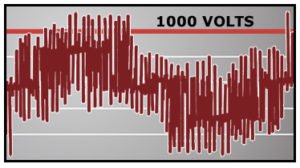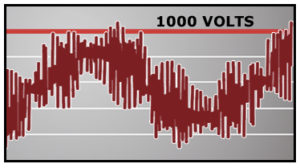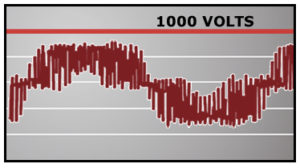Causes of Voltage Overshoots

Voltage overshoots are also known as dv/dt, voltage spikes or line notching. Voltage wave reflection is a function of the voltage rise time (dv/dt) and the length of the motor cables. As wire length or switching speed increases, the overshoot peak voltage also increases.The Variable Frequency Drive’s inverter circuit “switches” (transitions from the off state to the on state) rapidly, producing a carrier containing the fundamental voltage and frequency. Voltage wave reflection occurs when the impedance on either end of the cable run does not match, causing voltage pulses to be reflected back in the direction from which it arrived. As these reflected waves encounter incoming waves, their values can add, causing higher peak voltage.
Indicators of Voltage Overshoots
- Rapid Breakdown of Motor Insulation
- Bearing Pitting and Fluting
- Damage to Cables
- Motor Heating, Motor Noise, and Motor Vibration
- Instrumentation Noise
Motor Protection Solutions
After KDR
The addition of a KDR unit to the output of a drive will dampen overshoot peak voltage, reduce motor heating and audible noise, helping to extend the life of the motor.
After V1k
Greatly reduces motor failures on VFD applications by limiting the magnitude of voltage spikes to levels below 1000 Volts and slowing down the rate of change of PWM switching by a factor of four.


